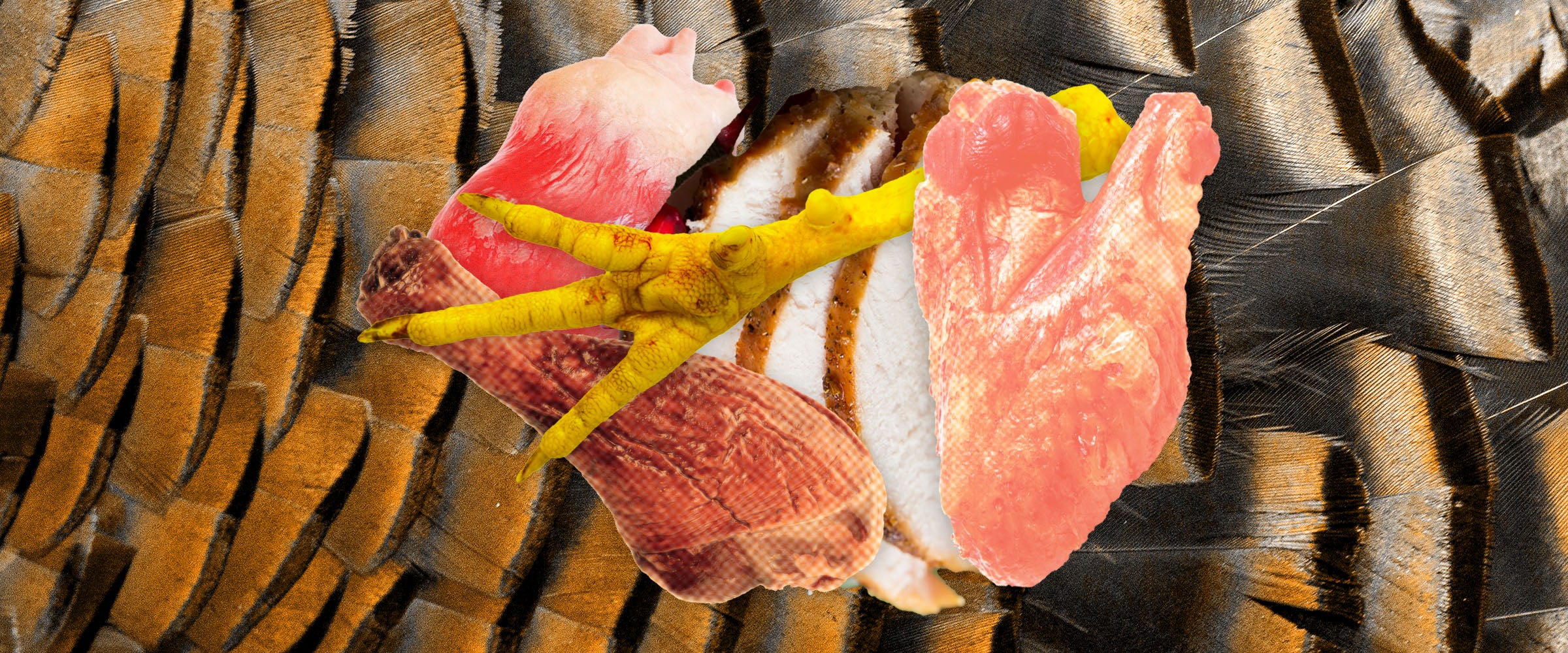Most of us have a preference for white meat or dark meat when eating turkey on Thanksgiving (if yours is white meat I’m sorry because you’re so, so wrong). But anyone attempting to remain thin through the holidays might benefit from taking a more meticulous look at the center of their Thanksgiving feast, since some parts of the turkey are, in fact, healthier than others.
To aid you in your quixotic quest against holiday weight gain, we asked Dana Hunnes, senior dietitian at the Ronald Reagan UCLA Medical Center, to help us rank turkey parts by how healthy they are, from “pretty okay!” to “do not eat that.”
First, though, you’ll be relieved to find out that, generally speaking, turkey is healthy. Nutritionist David Friedman, author of Food Sanity: How to Eat in a World of Fads and Fiction, even argues that turkey is the healthiest part of a traditional Thanksgiving spread. “Rich in protein, potassium [which supports our muscles], zinc [which supports the immune system] and niacin [which helps the body convert food into energy], turkey gets the number one spot as the healthiest pick for a Thanksgiving meal,” he says. “Turkey is also an excellent source of B12, which helps prevent the buildup of homocysteine, an amino acid that may decrease cognitive function — in other words, eating turkey makes you smarter.”
Friedman admits, however, that some parts of the turkey are definitely worse for you than others. “Because most of the fat content in turkey is in the skin, it’s easy to remove the skin to eat a leaner, less fattening dish,” he explains. “The dark turkey meat typically contains more vitamins and minerals than white turkey meat, but it also packs more fat and calories. Opt for pasture-raised turkeys, as they have higher heart-healthy omega-3 fatty acids than factory-farmed turkeys.”
Hunnes, meanwhile, warns, that turkey contains the potentially tumor-growing animal protein casein.
With all of that in mind, let’s rank some turkey parts…
1. Breast: “From a health-perspective, white meat [which can be found in the breast] tends to have less saturated fat [which may be linked to heart disease] than dark meat, however, this difference is fairly small — over the course of an entire Thanksgiving dinner, where saturated fat can be found in myriad other dishes, this difference is probably negligible,” Hunnes explains. “Still, in terms of ranking, I’d probably start with the breast.”
2. Legs: Turkey legs are predominantly made up of dark meat, which is why they come after breast in terms of healthiness. But again, as Hunnes mentioned, this difference is probably fairly negligible, especially when you consider that, as mentioned above, dark meat contains more vitamins and minerals.
3. Thighs: The only reason turkey thighs come next is because they typically contain more dark meat than the legs.
4. Wings: While white meat can be found in turkey wings, Hunnes explains that, “we’re more likely to eat some of the skin” when eating wings, and as Friedman mentioned earlier, the skin is extremely high in fat.
5. Heart and Feet (tied): Hunnes explains that the heart and feet (and indeed all the following turkey parts) are collectively known as offal, which basically refers to the entrails and internal organs of an animal used as food. “The heart is probably the healthiest of the bunch since it’s mostly pure muscle, with only some fat striated within,” she says. “Muscle is healthier than fat, because it tends to be leaner, and thus, has less saturated fat.” As for those claws? “Feet are nothing more than bone (calcium), cartilage (amino acids) and flavor,” Hunnes explains. “But they’re hard to eat unless you boil them, so they’re probably mostly meant for flavor.”
7. Gizzard: “The gizzard, which is part of the stomach, is probably mostly fat, so I wouldn’t recommend eating it unless you’re boiling it to flavor some broth,” Hunnes says.
8. Liver: “The liver is mostly fatty, and it’s a filtering system for the body,” Hunnes warns. “Therefore, I wouldn’t recommend eating it.”
For once, the tastiest bits are also the healthiest bits. So for that, dearest Thanksgiving turkey, I personally thank you for this early festive miracle.

